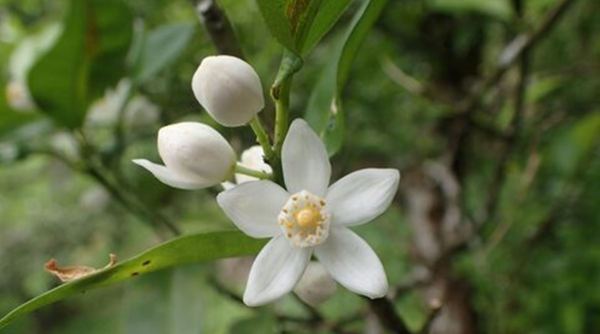Genomic analysis helps unravel the juicy past of flat lemon
The study revealed that all shiikuwasha are hybrids - one parent from the new Ryukyuan species and the other from mainland Asia.
 The study of genomic data revealed that wild mandarins split into two subspecies. (Wikimedia Commons)
The study of genomic data revealed that wild mandarins split into two subspecies. (Wikimedia Commons)Shiikuwasa, also known as flat lemon, is typical of Japan’s Okinawa islands and is used to flavour drinks, make jams, among other things. But the origin of Shiikuwasha and how it reached the islands was an unsolved mystery. Now using DNA studies researchers have found a few answers.
In the new study, published last week in Nature Communications, the international team studied 69 genomes of Asian citrus fruits and revealed a story of long-distance travel and hybridisation.
Fascinating research by members of OIST #MolecularGenetics Unit and colleagues at other institutes (incl. @BerkeleyLab) has revealed the origins of shiikuwasha and tachibana, two popular mandarins🍊 in #Japan. Published in @NatureComms!
Find out more👉 https://t.co/Fs9iK9AI0E pic.twitter.com/DGEO2g4fTZ— OIST (@OISTedu) July 27, 2021
Previous studies have shown that the Hunan Province of southern China is home to the most well-known mandarins. The study of genomic data revealed that wild mandarins split into two subspecies.
“We found that one of these mandarin subspecies can produce offspring that are genetically identical to the mother,” said first author Guohong Albert Wu, a research collaborator at the Lawrence Berkeley National Laboratory in California in a release. “Like many other plants, wild citrus typically reproduces when the pollen of the father combines with the egg of the mother, mixing the genes from both parents in the seed. But we found a subspecies of wild mandarins from Mangshan, in southern China, where the seed contains an identical copy of the mother’s DNA without any input from a father. So, the seed grows to be a clone of the mother tree.”
New species
A study on another citrus found in Okinawa revealed that it was a previously undescribed species. The researchers named it Citrus ryukyuensis or Ryukyu mandarin after the Ryukyu islands.
Further studies showed that all shiikuwasha are hybrids – one parent from the new Ryukyuan species and the other from mainland Asia. Also, all shiikuwasha have the same mainland parent and are half-siblings. Tens of thousands of years ago, a mainland mandarin reached the island either transported by human beings or by natural means and mated with the Ryukyu citrus, notes the team. All the shiikuwasha varieties found today are descendants of this mating.
 A shiikuwasha flower photographed in Ōgimi, Okinawa. (Dr. Chikatoshi Sugimoto via OIST)
A shiikuwasha flower photographed in Ōgimi, Okinawa. (Dr. Chikatoshi Sugimoto via OIST)
The team writes that another citrus fruit called tachibana is also a hybrid. Dr. Chikatoshi Sugimoto, from the Okinawa Institute of Science and Technology(OIST) explains in a release: “The tachibana lineage also seems to have descended from the newly described Ryukyu species and another mandarin from China, but its birthplace was probably what is now mainland Japan.”
“It’s fascinating to puzzle out the story of mandarin diversification and its relationship to the biogeography of the region,” concluded Prof. Dan Rokhsar, Principal Investigator of OIST’s Molecular Genetics Unit. “But it also could have commercial value. What other possibly hybrid types are there? Could we create new hybrids that are more resilient to disease or drought, or have other desirable characteristics? By looking into the past, we can create all sorts of possibilities for the future.”







